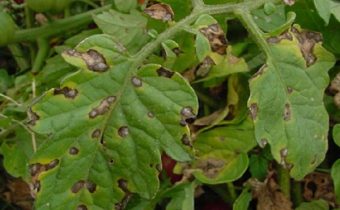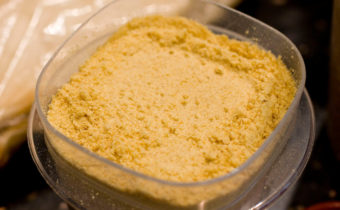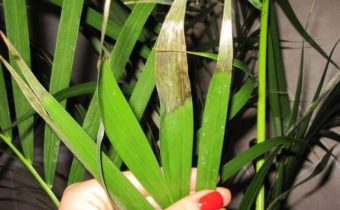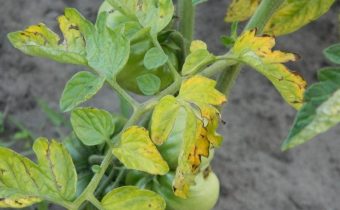Do I need to cut the leaves of tomatoes?
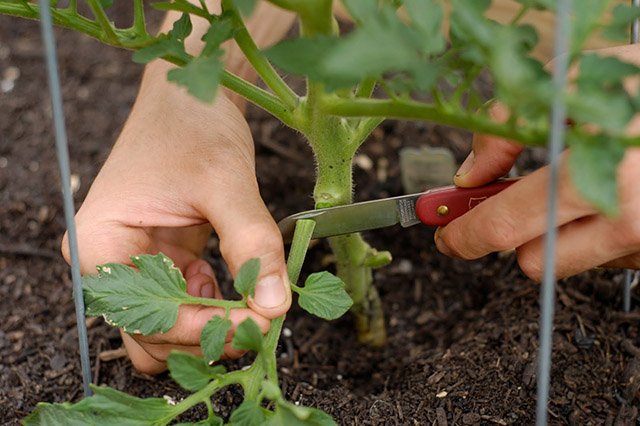
Even after full survival, grown or purchased, tomato seedlings do not relax gardeners. Young seedlings need to be carefully maintained throughout the season, providing the plants with water and nutrients in a timely manner.
Grown bushes should be loosened after each watering, and the lower leaves are cut off. However, not all gardeners know why they need to get rid of the leaves and how to carry out the procedure correctly.
Need to remove leaves
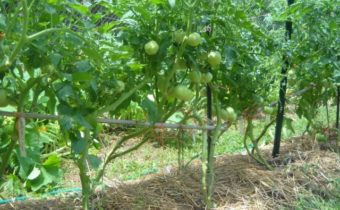 After landing in the ground, young seedlings with all agricultural practices adhere to grows several times in breadth, increasing the powerful vegetative mass. Even if the distance between bushes of 50-70 cm is observed, the plants that have grown in one and a half to two months close each other from the sun. In the struggle to get a “dose of ultraviolet”, tomatoes are increasing their vegetative mass even more, and all their power is consumed to grow. In order not to be left without a crop, there is a need for pruning extra foliage. It is worth knowing how to properly trim the bushes. The main reasons why you want to remove the leaves:
After landing in the ground, young seedlings with all agricultural practices adhere to grows several times in breadth, increasing the powerful vegetative mass. Even if the distance between bushes of 50-70 cm is observed, the plants that have grown in one and a half to two months close each other from the sun. In the struggle to get a “dose of ultraviolet”, tomatoes are increasing their vegetative mass even more, and all their power is consumed to grow. In order not to be left without a crop, there is a need for pruning extra foliage. It is worth knowing how to properly trim the bushes. The main reasons why you want to remove the leaves:
- The large lower external organs of tomatoes consume a lot of moisture, delaying the process of photosynthesis, gas exchange and transpiration of the plant itself. Taking a large part of the sun, the lower leaves do not convert it into chemical energy, due to which the formation of fruits occurs. Therefore, the foliage growing near the soil surface should be periodically cut off;
- thickened plantations of tomatoes suffer from a violation of temperature and humidity conditions. This negative process can lead to the defeat of plants by pathogenic spores and the invasion of insect pests;
- wet after rain or watering the lower part of the vegetative mass in contact with each other and the soil in which tens of thousands of pathogenic spores inhabit. To protect tomatoes from infection with a fungal or viral infection, lower leaves should be cut.
If all the fruits have already formed on the flower brush, then you can safely cut off all the vegetative organs that are below the ovary. However, if the formation of fruits in the inflorescence continues, before it is completed, it is desirable to preserve most of the leaves.
In the greenhouse
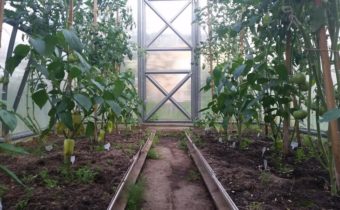 To understand that greenhouse plants need pruning foliage, look closely at the bushes. If tomatoes growing in greenhouses have grown heavily - immediately begin to break the leaves. There are no specific rules for cutting the excess part of the vegetative mass, however, experienced gardeners recommend carrying out the procedure in the greenhouse at least once or twice a week. With the defeat of plants in a closed ground with any infection, it is not necessary to postpone the event and immediately cut out all the diseased leaves. Pruning are subject to:
To understand that greenhouse plants need pruning foliage, look closely at the bushes. If tomatoes growing in greenhouses have grown heavily - immediately begin to break the leaves. There are no specific rules for cutting the excess part of the vegetative mass, however, experienced gardeners recommend carrying out the procedure in the greenhouse at least once or twice a week. With the defeat of plants in a closed ground with any infection, it is not necessary to postpone the event and immediately cut out all the diseased leaves. Pruning are subject to:
- blackened and withered vegetative organs;
- foliage with brownish brown, black spots and dots;
- part of the vegetative mass that interferes with normal air exchange in strongly overgrown bushes;
- lateral processes growing between the base of the leaf and the stem;
- external organs grown in the fruit cluster;
- old vegetative organs relating to the soil.
In the open ground
For tomatoes that are cultivated in the open field, exposure to the vegetative mass of ultraviolet radiation is the main condition for the normal development of the plant. When thickened planting his deficiency will lead to a decrease in yield. Nearly planted tomatoes will suffer from increased humidity and lack of nutrients necessary for the normal formation of fruits. To prevent this trouble, it is necessary to conduct timely cutting of the lateral processes and excessive vegetative mass.
The lower vegetative organs of the bushes relating to the soil should be removed as early as possible, since touching the leaves will provoke the development of:
- late blight;
- alternariosis;
- anthracnose;
- septoria;
- Phomosis;
- powdery mildew;
- bacteriosis;
- mosaics.
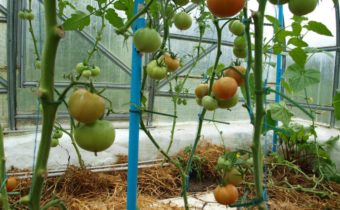 Most pathogenic organisms live in the soil and easily move along the lower leaves, finding a “permanent place of residence” on the tomato bushes. You can fight pathogens with fungicides, however, the processed vegetables will no longer be environmentally friendly. Therefore, until the infection of tomatoes in order to prevent, you should take sharp scissors and remove the lower foliage.
Most pathogenic organisms live in the soil and easily move along the lower leaves, finding a “permanent place of residence” on the tomato bushes. You can fight pathogens with fungicides, however, the processed vegetables will no longer be environmentally friendly. Therefore, until the infection of tomatoes in order to prevent, you should take sharp scissors and remove the lower foliage.
To cut off in the open ground, tomatoes also need the external organs of the vegetative mass, which prevent the main stepsons from developing normally. It is worth starting an event when the plant reaches the age of 40-50 days. Leaves covering the stem from sun rays and external vegetative organs growing in the shade are also subject to pruning.
After pruning the foliage, the plants experience "stress" for several days. To help them recover faster, spray the bushes with Epin or Zircon growth stimulant solution.
Terms of circumcision
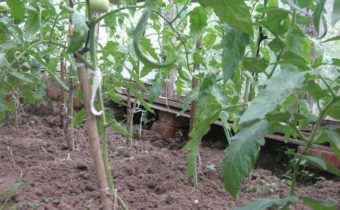 Some gardeners start pruning the lower part of the vegetative mass of tomatoes as soon as the ovary begins to form. However, most of the growers begin to remove the foliage at the time of pouring the fruit. For the normal formation of flower brushes and the formation of fruits, plants need nutrients that come to the ovaries from the lower part of the plant. After 10-14 days, the fruits will begin to synthesize independently, and the lower foliage can be safely removed.
Some gardeners start pruning the lower part of the vegetative mass of tomatoes as soon as the ovary begins to form. However, most of the growers begin to remove the foliage at the time of pouring the fruit. For the normal formation of flower brushes and the formation of fruits, plants need nutrients that come to the ovaries from the lower part of the plant. After 10-14 days, the fruits will begin to synthesize independently, and the lower foliage can be safely removed.
Which method is best known by dividing the existing tomato plot into two parts. At each of them to conduct pruning of plants at different times, checking later the results obtained. It is simply unrealistic to establish exact terms for pruning, since each variety or hybrid of a tomato has its own characteristics and ripening terms. Much depends on the characteristics of the climate where the vegetable is grown.
The main reference point for gardeners to start pruning the vegetative organs of tomatoes is the moment of ejection of flower brushes and the formation of fruits. As soon as the vegetables begin to acquire a brown color and fill, the foliage located near the surface of the soil should be cut off gradually. If on a healthy shrub the leaf plate of the organ is partially yellowed, trim only the color-changed part. The healthy part of the leaf will continue to function, and the process of photosynthesis will flow in its cells, feeding the plant.
In late July - early August, in regions with a temperate and cool climate, it is necessary to trim the leaves and growth points on the tops of the culture. Events are held in order that with the approach of autumn new fruits will not form, which will not have time to ripen before the onset of frost, and the old have had time to completely redden.
Because of the cool nights, the plant does not need a large number of leaves, which by the end of summer are increasingly affected by disease-causing spores. When pruning foliage at the end of summer, leave 5-6 upper leaves on each bush. At the same time, you should try not to touch the vegetative organs that are directly above the upper brush. If the uppermost leaflets are damaged, sap flow will break, the plant will get sick and die.
After pruning, tomato leaves should never be left on the plot or laid in a compost pile. The pests and pathogens living on the leaf plate easily infect other solanaceous crops. Therefore, cut the vegetative mass of tomatoes should be sure to burn.
Trim rules
The outer organs of the tomatoes located below the inflorescence should be removed in several stages. In most cases, after budding, the stem continues to grow. On it are formed shoots that grow from the sinuses of leaves. Growing lateral processes are an additional load for the plant, so they need to be systematically cut.
In order not to injure the fruit, the leaves above the first flower brush should be removed gradually. On undersized varieties and hybrids of tomatoes during the growth of the stepson, you can leave two or three flower ovaries together with the leaves. However, after 10-12 days, the lower leaves should be cut out on the grown lateral shoots. Each pruning of the vegetative mass of a plant violates the integrity of the shrub, allowing viruses and disease disputes to penetrate through the cuts. So that after removing the foliage not to be left without a crop, you should follow some rules:
- Do not pull or pinch the leaves with your fingers, as this method can severely injure the plant. In addition, moving from bush to bush, using dirty hands can spread the infection throughout the site;
- carry out pruning of vegetative organs only during the daytime in dry hot weather so that in the evening the cut sites have time to dry out and tighten;
- on tall, medium-sized varieties and hybrids, cut off all lateral processes. On short, needing bush formation - from four to eight shoots;
- checking planted plants every five days, systematically cut out diseased or damaged leaves, lateral processes;
- handle cutting material to prevent the transmission of chlorhexidine, surfaniosis or antiseptic tonic. After the pruning procedure, the instrument is re-sanitized;
- in an adult plant, the lower vegetative organs are cut so that the trunk is bare from the soil at a distance of 35-45 cm.
To grow tomatoes from seedlings or seeds can anyone. The main thing is to perform all the recommended agrotechnical techniques, one of which is to remove excess foliage.

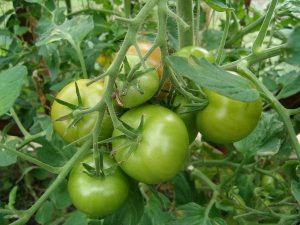
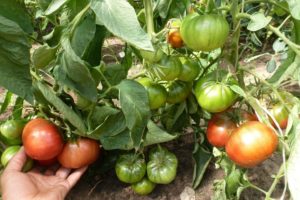

 (4 ratings, average: 4,25 from 5)
(4 ratings, average: 4,25 from 5)